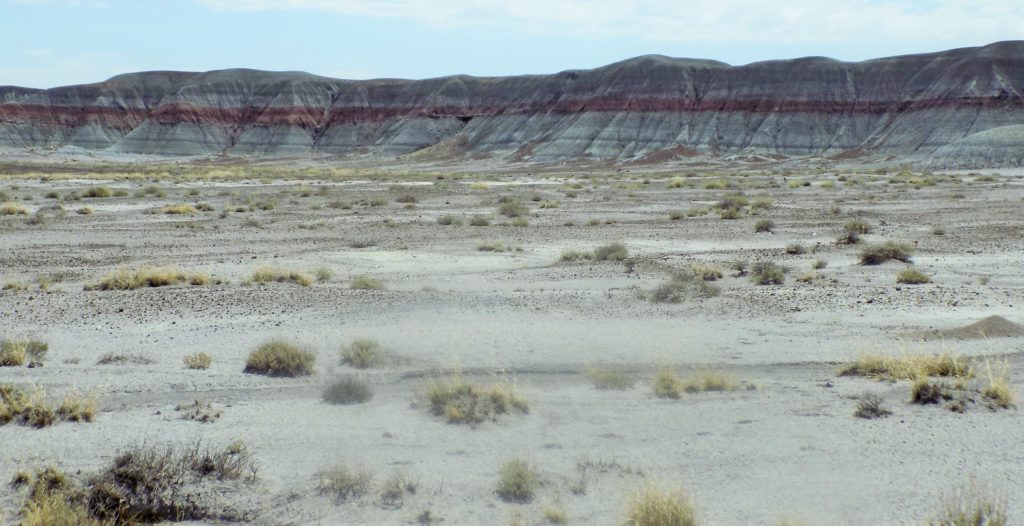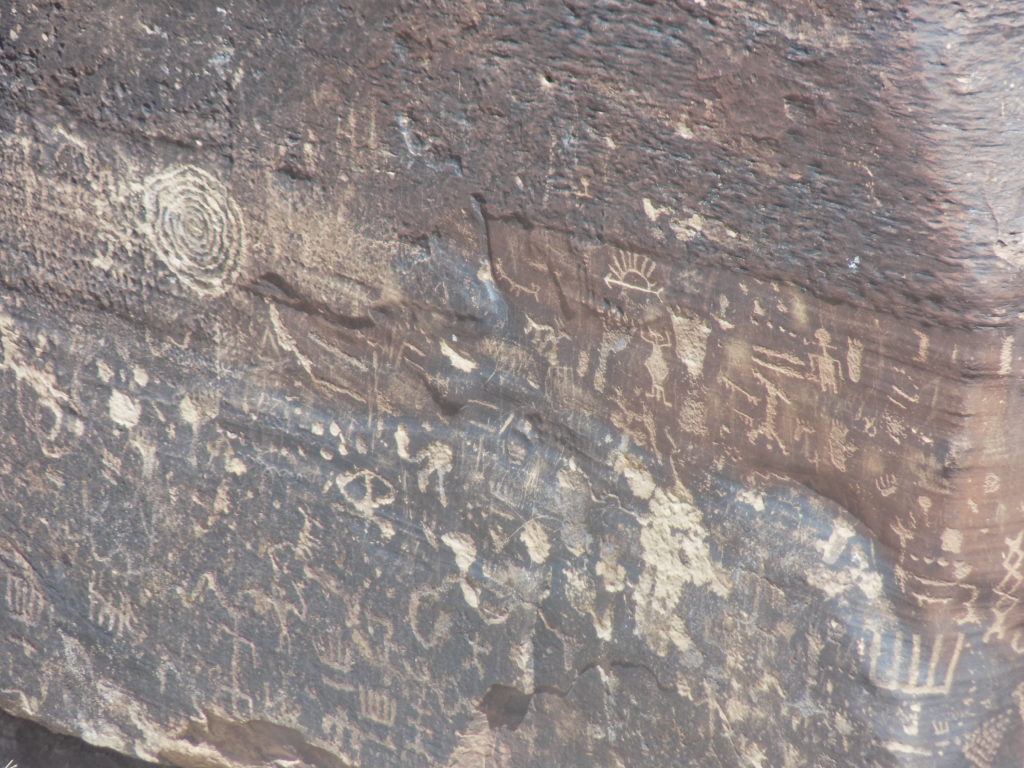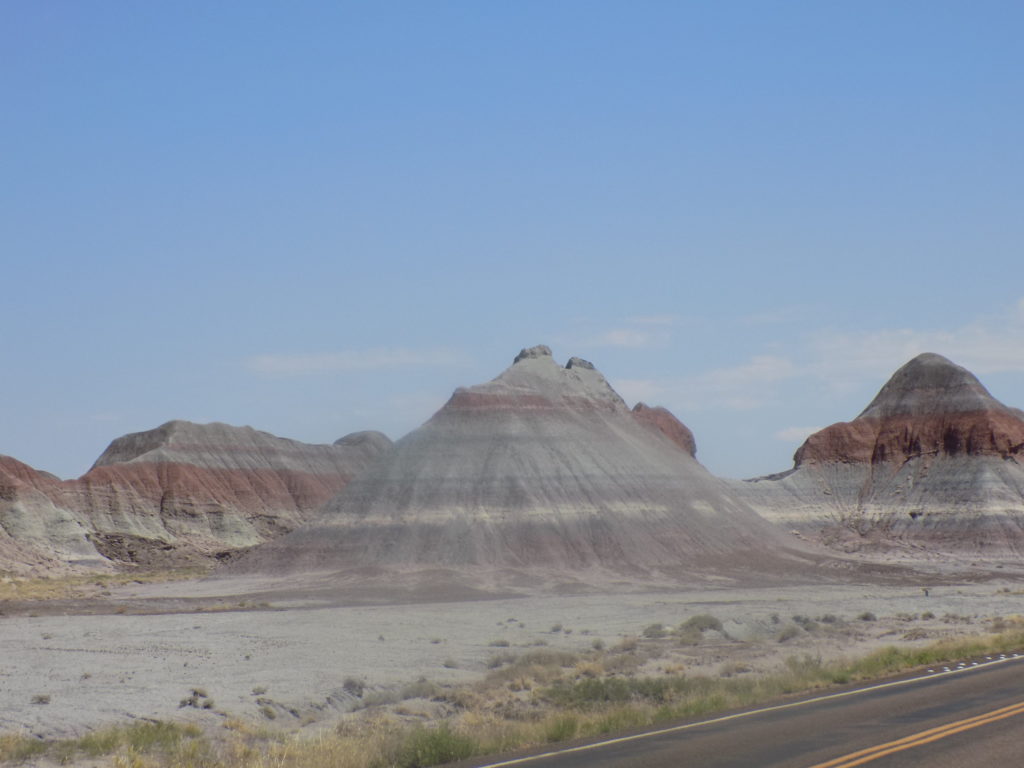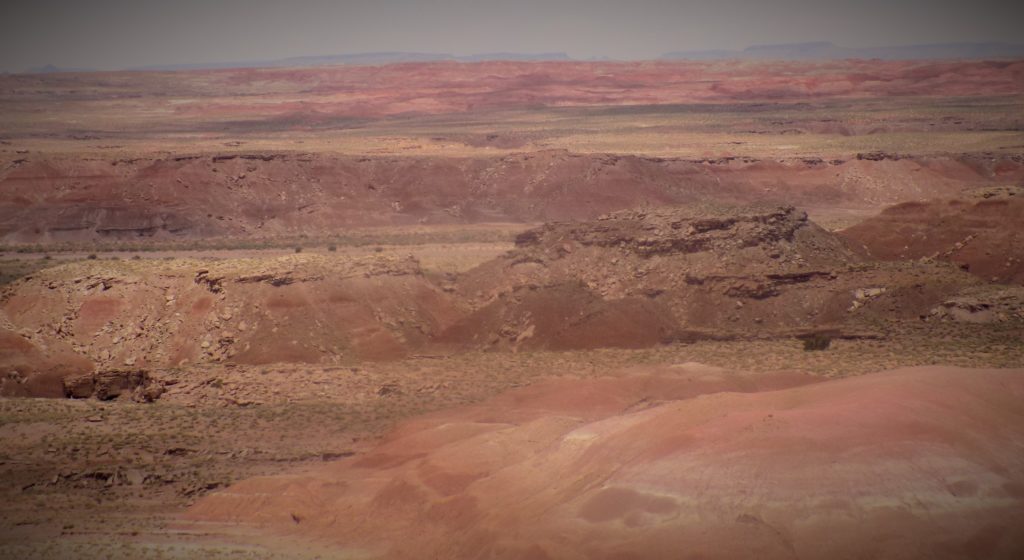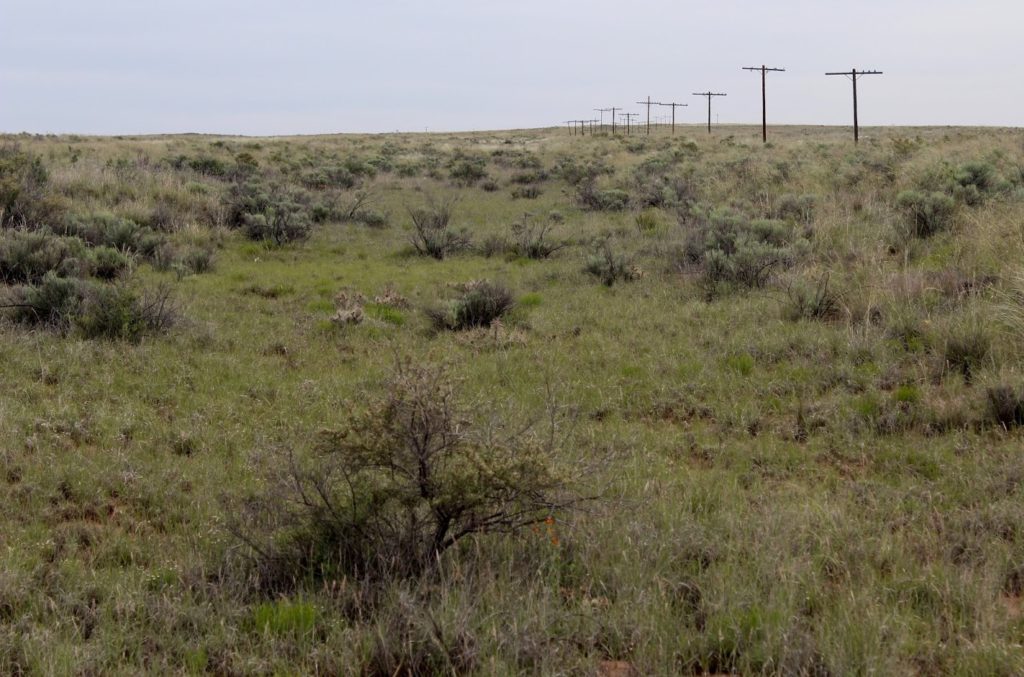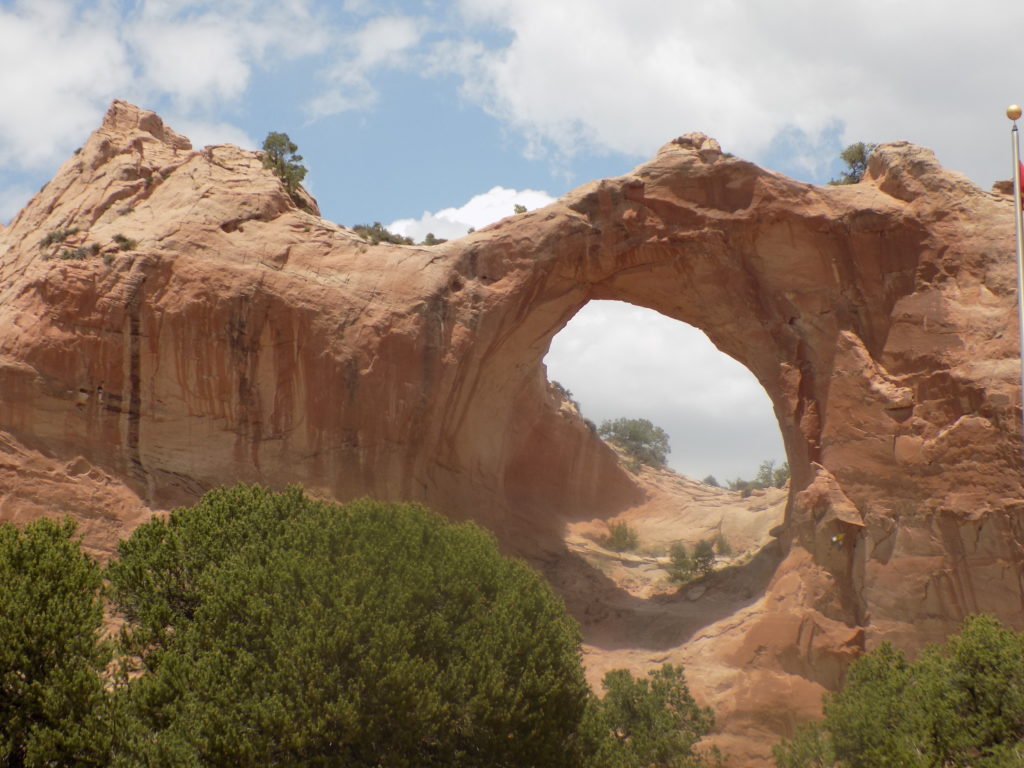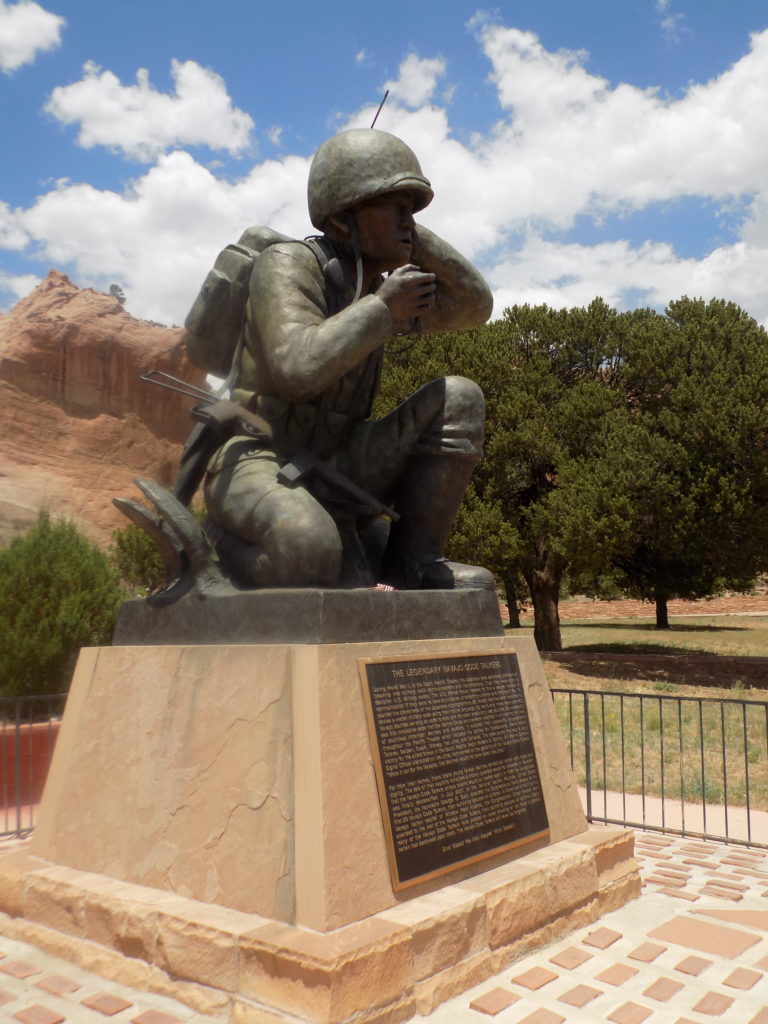Driving On.
As you continue along the 28-mile Petrified Forest Drive, you enter an area of badlands quite reminiscent of those found in South Dakota. (Thankfully, there’s nothing as tacky as Wall Drug waiting at the end of these bad boys.)
As you would expect, you can pull off the main road at many spots along the route. One of the first of those is the Crystal Forest – so named because of the crystalline structures visible in much of the petrified wood. I took many photos but suggest watching this video
for a much more thorough tour.
After the Crystal Forest, I chose the Agate Bridge as my next stop. The “bridge” is a fossilized tree that grew 217 million years ago in the lush forest I previously described. When the tree died, it fell into a river and was relatively quickly buried by sediment that prevented its decay. Permineralization created the bridge. Water and wind erosion followed to expose it once again. However, it’s slowly being eroded by the wash that it spans. If you look at the photo in the album, you’ll see a concrete bar supporting it in a tenuous attempt to extend its lifespan.
My next stop at Newspaper Rock would affect the Utah portion of my trip. Petrified Forest’s Newspaper Rock is a group of rock faces within a small area adorned by more than 650 petroglyphs.
I don’t set many rules, but here’s one: Don’t confuse petroglyphs with pictographs. Although the definition of the latter has broadened to encompass any of the symbols belonging to a pictorial writing system, its original – and still primary – definition is “an ancient or prehistoric drawing or painting on a rock wall”.
Petroglyphs are different. Petroglyphs are made to last. You know from the opening etymological discussion that the “petro” part of the word means rock. The familiar word hieroglyph provides a clue to the meaning of the word’s second part – “a symbol that conveys information nonverbally.” Petroglyphs are rock carvings made by pecking directly on a rock surface. Peck away a rock’s dark surface, expose the lighter surface underneath and you’ve created a petroglyph.
You might call the thin dark surface with the lighter undercoat a sort of desert varnish. This type of formation occurs throughout the region and as I drove through Arizona and Utah, I’d discover that Newspaper Rock petroglyphs are somewhat common. However, it’s probable that encountering concentrations like the one in Petrified Forest indicate that location’s importance.
The glyphs likely accumulated over generations so even with some sort of Rosetta Stone, it’s unlikely that we will know whether they are family or clan symbols, have spiritual meanings, or mark calendar events, territorial boundaries, or migratory routes. Visitors can’t get up close and personal with these petroglyphs but a decent telephoto lens can.
I have two more points before we leave Petrified Forest and Painted Desert. The first, is noting the remarkable transitions in the park’s appearance from the colors dominating the first photo in this post to the formation called the Teepees (below)
to the vibrant hues once you reach and cross the I-40 overpass that look like this:
It’s magnificent.
Second, the Painted Desert area holds a unique distinction among U S National Parks. It’s the only park that preserves a section of Route 66. A few hundred yards beyond that I-40 overpass there’s a pullout on the left side of the road. From this point you can view the (barely discernible in my photo) roadbed and a line of historic telephone poles that mark the path of the mother road as it passed through Petrified Forest National Park.
I won’t be writing in code.
Other than for a short stretch or two on I-40, I’d spend the rest of the day (and night, in fact) in the lands of the Navajo Nation. Although I’ll frequently use the common term Navajo, I will out of respect, note that they refer to themselves as Diné and will use the terms interchangeably. The first place I planned to stop was in the Diné capital, Window Rock, named for this formation.
I thought it was important to honor the service to the United States of a group of little-known World War II heroes – the Navajo Code Talkers. It’s possible some of you are WW II history buffs and others remember the 2002 Nicolas Cage movie Windtalkers, but it’s equally possible many of you aren’t aware of the critical role these men played particularly in the Pacific Theater.
The American military first used Indian code talkers – primarily Choctaws – with considerable success in World War I. However, between the first and second World Wars, the Germans and Japanese sent students to America to learn several Native American languages.
Japanese cryptographers, many of whom had been educated in the United States, broke American military codes almost as rapidly as they could be devised. Philip Johnston, a civil engineer who had served in World War I and lived in Los Angeles, appears to have discerned the problem after reading a newspaper article on military security. Johnston, the child of missionaries, had lived on the Navajo Indian Reservation from age four and was fluent in both English and Navajo.
He somehow connected the two and formed the idea of a secret military code based on the Navajo language. Johnston believed this would succeed because Navajo verb forms are highly complex and the language includes numerous words that, depending on inflection, can have as many as four unrelated meanings.
In February 1942, Johnston traveled south to Camp Elliott near San Diego, where he tried to convince, the Marines’ Signal Corps Communications Officer, that a code based on the Navajo language would be unbreakable. (Perhaps finding Navajo incomprehensible, even the Germans and Japanese had ignored it.) Somehow Johnston persuaded a highly skeptical Lieutenant Colonel James E Jones to set up a test.
The test on 28 February 1942 proved so successful that the commanding officer, Major General Clayton Vogel, immediately sent an urgent request to Washington seeking permission to recruit and train 200 Navajos to serve as coding specialists. Whether it was military bureaucracy, elements of prejudice, or simply an overabundance of caution, the War Department needed more than a month before approving a pilot project limited to 30 men with 29 actually recruited. (The program was declassified in 1968 and in 2000 President Clinton signed a law awarding the Congressional Gold Medal to these original 29 men.)
During their basic training at Camp Pendleton, the 29 Navajos had to devise a new Marine Corps military code. The code’s words had to be short, easy to learn, and quick to recall. Because some military terms – even ones as simple as tank – had no Navajo equivalent, they devised a two-part code. They first developed a phonetic alphabet using two Navajo words – often the names of animals or birds – for each English letter because using two words interchangeably made the code harder to break.
Part two created a 211-word English vocabulary with Navajo equivalents. Some words in a message were spelled and others substituted. This code, because it effectively needed only to be translated from Navajo to English, was considerably more efficient than conventional coding methods that involved lengthy encoding and deciphering procedures and sophisticated electronic equipment. (I mentioned the word tank above because the Navajo substitute was turtle. As one veteran described it, “It’s just like a turtle, you know. It has a hard shell and it moves and so we called it a wakaree´e, a turtle. Submarine became Besh-lo or ‘iron fish.'”)
While a handful in the original contingent remained stateside to serve as trainers and recruiters, most reported for combat duty in August 1942 to Major General Alexander Vandegrift’s First Marine Division on Guadalcanal. The code talkers’ performance was so impressive Vandegrift requested 83 additional Navajos to be assigned to his division alone.
By August 1943, nearly two hundred Navajos had been trained at the camp. None other than staff sergeant Philip Johnston, commanded the code-talker program. Although over-age for active duty with the Marines, Johnston volunteered his services. More than 400 Navajos served as code talkers mostly with all six Marine divisions in the Pacific. (In fact, American Indians served at a rate 25 percent higher than that of the general population.) They participated in major Marine assaults on the Solomons, the Marianas, Peleliu, and Iwo Jima.
Of the landing on Iwo Jima, Major Howard Conner, the Fifth Marine Division’s Signal Officer, said, “The entire operation was directed by Navajo code. During the two days that followed the initial landings I had six Navajo radio nets working around the clock. They sent and received over 800 messages without an error. Had it not been for the Navajo Code Talkers, the Marines never would have taken Iwo Jima.”
Despite having played such a vital role in the success of the Pacific campaign, despite returning home with honorable discharges, the Navajos were often denied the benefits most other returning veterans received under the G I Bill.
There are more pictures of the window and Memorial here.
